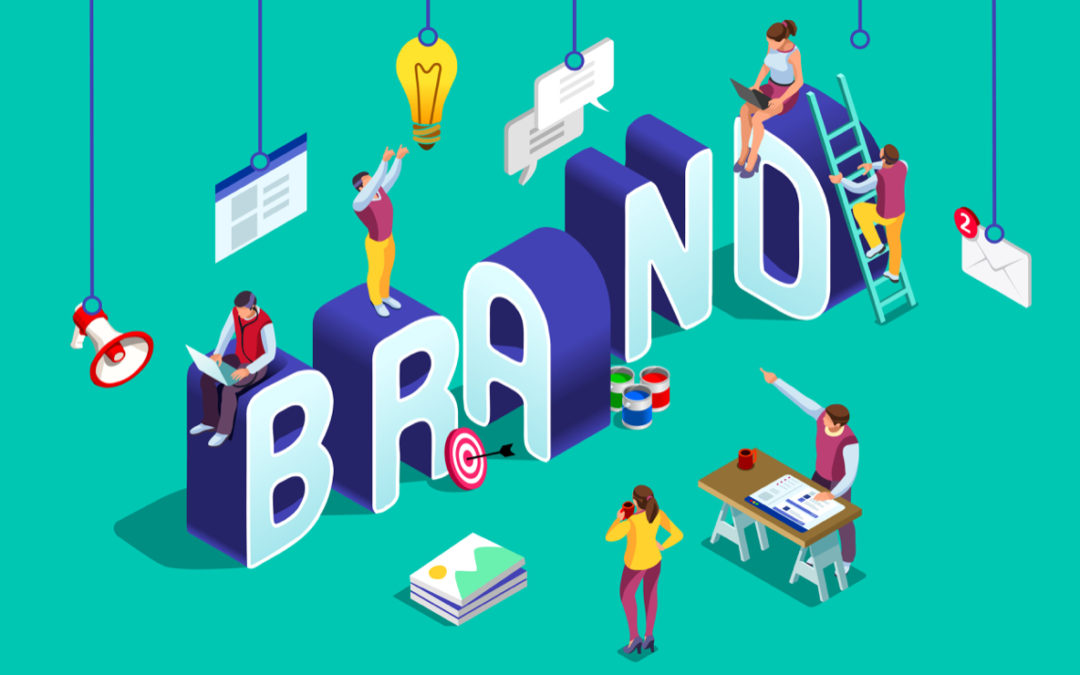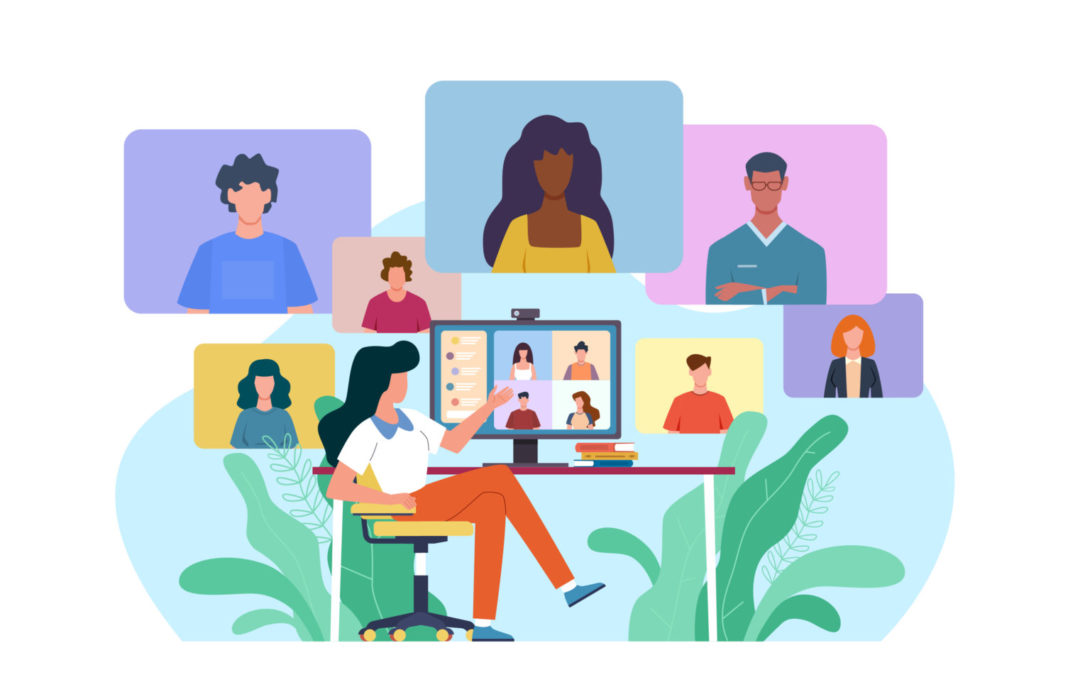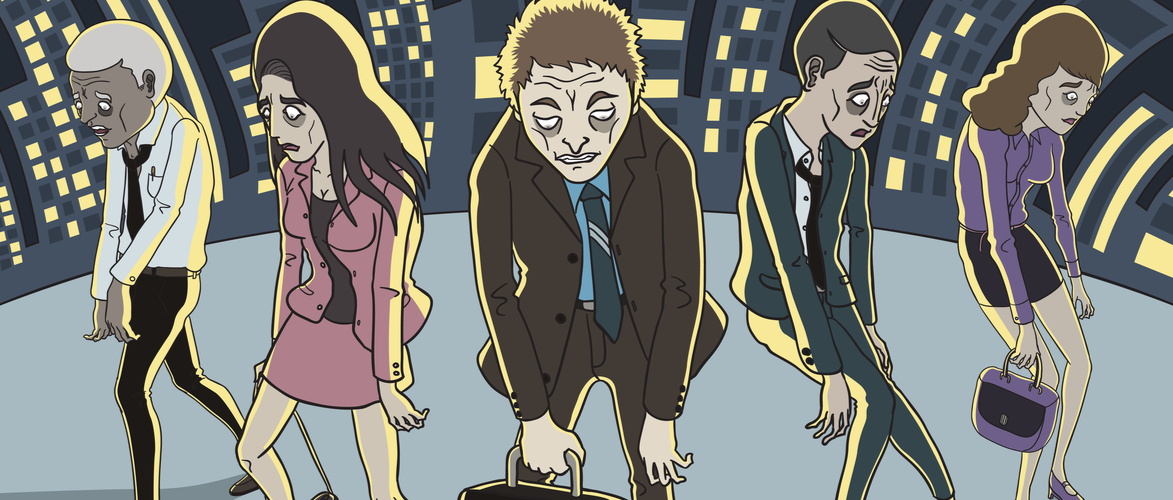
by American Business Women's Association | Nov 18, 2022 | Blog
Several neuroscience principles limit our ability to creatively solve problems and generate innovative ideas. Understanding some of these principles can help you optimize your creative thinking and innovation processes.
While your brain is working all the time, there are serious energy constraints.
The brain stores no fuel, and running on empty degrades performance significantly. Therefore, it needs frequent breaks from high energy usage.One of the places you experience this brain energy constraint most acutely is during the brainstorming phase. It’s a fast and furious pace of generating ideas, potentially for a long time. Leaders have always known that taking breaks from ideation makes for better results, and this neuroscience principle is obviously why. However, it’s also important to help people understand they actually need to take a brain break, and to have the willpower to do it (instead of checking email or doing other work during the “break”). To help them, plan a little “enforced fun.” This can be things like group juggling, kid-like games or songs like “Heads, Shoulders, Knees, and Toes”, or an impromptu dance session.
You’ll notice many of these activities have a physical element. This physicality also helps with restoring some energy for the intensive brain work.
Another energy-enhancing tip: feed people. A growling stomach is not conducive for maximum output of ideas. Be sure to feed them satisfying food—not just sweets. Offer nuts, cheese, veggies, or fruit. Oh, you can offer sweets too—but always make sure there’s some more sustaining fare, as well.
The brain naturally limits System 2 thinking.
Your brain has two types of thinking:
- System 1 (Fast): is the “easy” type of thinking that we use most of the time. It’s intuitive and automatic. So, obviously, it’s also energy-efficient
- System 2 (Slow): is thinking that requires more deliberation, more focus, more conscious thought, and literally uses more energy. So, we subconsciously avoid it whenever we can.
If you avoid (or limit) System 2 thinking when it’s needed in your innovation process, you will, at the least, miss out on really good ideas—and at the worst, make some bad judgment calls that you might have avoided if you had effectively used System 2.
One of the phases where people frequently try to avoid System 2 thinking is immediately after idea generation, when it’s time to select the best ideas. The brainstorming is usually lots of fun. It’s fast, and our brains are making sub-conscious and intuitive connections. Then comes the time we have to be focused and deliberate to narrow to a manageable set of ideas. Suddenly, it all becomes…a Lot. Less. Fun.
Know that your team will try hard to avoid System 2 thinking, and you need to be prepared to counter the objections, and ensure that the needed deliberate thinking will happen. For example, people will say, “It takes too long to review all the ideas. We don’t have time.” or, “Let’s just have everyone champion a few ideas instead of reviewing all of them. The ones we remember are probably the best ones anyway.” (Which isn’t true, but that’s another topic.)
Another all-too-common scenario — the team has gotten together and spent several hours generating ideas. Then, everyone gets 5 sticky dots to vote for top ideas. Most people will do this in 5 minutes and immediately dash out the door. They weren’t forced to engage System 2 thinking, so they won’t. Their decisions will rely on System 1, with all its concurrent biases, shortcuts, and mistaken intuition. There will never be the deliberate, conscious, effortful thinking that’s needed at this stage. If this is the typical process in your innovation sessions, you need to make some significant changes.
The brain is a “Bayesian inference machine.”
Huh? Bayesian logic is a very specific, formulaic method that provides a disciplined way of combining new evidence with prior models. So, the reference to our brains being a Bayesian inference machine is obviously a metaphor, although a very apt one.
Whenever people are faced with new information, they use it to only slightly refine — not completely rethink — their existing models/beliefs/hypotheses. Rarely do we assume new data means our existing beliefs might actually be wrong. Instead, we make only incremental and minimal adjustments to our existing beliefs; the least possible change in our thinking that will account for the new data.
Further, the more experience you have in a subject, the more of these existing assumptions you have about it. You are likely not even aware of all these embedded assumptions; many of them are so ingrained in your thinking that it wouldn’t occur to you to question them. They are presumed to be fact — if you even consciously recognize that you have these beliefs.
Obviously, to reach truly breakthrough insights and ideas, you must go beyond incremental thinking. To get there, we need to consider the possibility that our view of the world (or the market, or our product category, etc.) might need shaking up. Given that our human tendency is to retain existing mental models, you need to consciously be doing things to help you and your team break out of this natural limitation on new thinking.
Our brains are constantly making short cuts, mostly in the interest of conserving energy. As a result, your brain will subconsciously limit your thinking in ways you’re not aware of, unless you consciously and actively manage it. Remaining vigilant about these neuroscience-based barriers can help you dramatically improve your creative thinking and your innovation processes.
About the Author, Susan Robertson
Susan Robertson empowers individuals, teams, and organizations to more nimbly adapt to change, by transforming thinking from “why we can’t” to “how might we?” She is a creative thinking expert with over 20 years of experience speaking and coaching in Fortune 500 companies. As an instructor on applied creativity at Harvard, Susan brings a scientific foundation to enhancing human creativity. To learn more, please go to: https://susanrobertson.co/

by American Business Women's Association | Oct 21, 2022 | Blog
We live in an upside world where the old rules no longer apply. Many call it a VUCA world – volatile, uncertain, complex and ambiguous. Mass consumerism has been replaced by a new consumption paradigm as people are driven by new essentialism where things matter less and relationships, experiences and self-being dominate all. In this new world, workers are restless, customers fickle, investors skittish, and the public has an appetite to cancel. In order to rally everyone together to stand behind a company and its path during all the ups and downs, leaders need to draw upon emotions as rationality will not carry the day. They have one tool at their disposal to do this delicate work – the brand.
Although often associated with marketing, brands are actually cultural icons that symbolically carry meaning. In just a nano second, they evoke common immediate meaning and emotions across all people. Think BMW, John Deere, Chanel, Apple and American Express. In a world where everything is uncertain, brands can be trusted to stand true. Now, if you don’t have a brand, you can build one. Anyone can. It takes commitment to people, to tell their story and represent their interests with your brand, not your own. If you create a brand that represents the highest common denominator between your people (customers, employees, investors) and your products/services, then you can forge an enduring powerful partnership that will yield surprising dividends for your business. It all begins with understanding the basics of what a brand really means for a business.
ONE – A Brand Resides in the Mind not in a Logo
Although expressed in a logo and a tagline, a brand is actually a mental construct that gets into the mind and lives in the memory of people. Branding is the process of creating the brand in the minds of people. It is typically done by creating things and experiences that “express” the brand such as marketing materials and product design. Brands also live in the culture. Powerful brands like Nike become social concepts and exist in the culture where they continually give people cues and establish the brand as a part of society.
TWO – Brands Set Meaning
Brands give meaning to products. Is an anti-lock braking system (ABS) a breakthrough in performance (BMW) or safety (Volvo)? That depends on the brand. The brand is a mental lens that provides immediate meaning. A Snickers bar is a snack. Tiffany means luxury taste and quality. Apple is about unleashing creativity while IBM is about improving productivity. The brand provides context which tells people why a product is important to them.
THREE – Brands Carry Emotional Power
Like great art, brands are designed to elicit a response, both emotional and rational. Like art they can enchant and often captivate people which creates desire. Marlboro was the first filter-tipped cigarette and was initially launched as a woman’s cigarette which failed. The same product was re-branded as the ultimate masculine smoke and with the swagger of the Marlboro man still remains one of the most powerful brands in the world. Powerful brands are mythologies that evoke emotions that swell to desire.
FOUR – Brands are Fiction Not Fact
Branding is poetry not journalism. Messaging matrixes and value propositions belong to marketers and are fact-based. Branding is another world that is concept-based. Branding brings out the big gun – an idea. A powerful, transcendent, mind-tweaking idea designed to engage the mind and heart at another level. The idea is what catalyzes new behavior and thinking. When Tide gets clothes clean, it means that Mom and Dad are good parents and conveys that message. The Home Depot is a large hardware store, but the brand makes it a Home Center for any current and aspiring do-it-yourselfer.
FIVE – Brands Defy Logic
When you have a powerful brand, you’ll be surprised by what it can do. You will see strong conviction and commitment across employees, customers and investors despite challenges. People tend to defend the brands they love and stay loyal against all odds – better alternatives, cheaper alternatives, easier alternatives. To achieve that kind of priceless cohesion, you have to build and continually maintain the brand campfire – and make it into a bonfire for the whole world to see. At John Deere, they say people bleed green because the brand is so deep.
SIX – Brands Deliver Business Value Multiple Ways
Because powerful brands are sticky, they have the ability to build a moat around the business. Customers remain loyal even in the face of superior performing or lower priced competitors. People forgive and forget product and corporate errors which mitigates losses. People are more willing to try new products, services and experiences from brands they love which accelerates sales. If you have a vision to build an empire, but a brand to amplify the upside and mitigate the downside.
Many corporate executives view the brand as simply a marketing asset. Others like Steve Jobs, Bill Gates, Richard Branson and Elon Musk view it as a corporate asset, part of the business strategy. Once built, a powerful brand can be used to wield influence in many circumstances from the Main Street to Wall Street to Capitol Hill. While products and executives may come and go within a company, the brand can endure forever – as long as it is well maintained.
In a world of fake news where people are becoming increasingly unmoored and where constant shocks and disruptions seem to prevent ‘normal’ from ever being a reality, brands are a reassuring presence that people can depend on. Powerful brands nurture, the people that come to work, buy products and invest in companies. Business always comes down to connecting with people on a human level. Powerful brands are creative concepts that stimulate the imagination and emotions in ways that most CEOs cannot. With a powerful brand, the CEO has a tool to open minds, raise hearts, command attention, bring everyone together and protect the business again in a volatile, uncertain, complex and ambiguous world.
About the Author: Jane Cavalier, CEO and Founder of BrightMark Consulting, is a nationally recognized brand strategist, board member, blogger and author of bestselling business book The Enchanted Brand (Amazon). She helps organizations conquer a changing world with powerful brands and reputations. Recognized for creating breakout brands like Snapple and Qwest, Jane has worked with over 100 organizations including American Express, Johnson & Johnson, ExxonMobil and the U.S. Navy. For more information, visit www.brightmarkconsulting.com.

by American Business Women's Association | Oct 14, 2022 | Blog, Uncategorized
No single person, no matter how intelligent or experienced, can understand everything there is to know about a given job. Questions will come up, and when they do, the individual – whether a software developer, project manager, sales engineer – or any other title, needs to have a handle on the specific support that is needed, and how to ask for it.
With more people working remotely than ever before, this topic is emerging as a persistent issue. This is particularly true in fields like tech, in which teams must understand how to quickly resolve network and other systemic breakdowns and problems. Here are some ideas how to overcome lack of on-the-job support and seek help:
- Be sure to reach out to the right person. Many times, unhelpful or unsupportive people are acting out of lack of knowledge. Before you text, email, or phone, consider if you are contacting the correct individual. This person may have taken a different position in the company and is no longer current on the issues you need. If you require specific examples of what to do, reach out to someone good at providing practical advice – not someone who offers platitudes like, “You’re smart, you’ll figure it out.”
- Understand the support you need and ask for it Make it clear to colleagues and supervisors alike where you need help. Do you need support on a particular problem? Do you require assistance to better understand the project in its entirety? Perhaps you need to just grasp your specific role in it? Maybe you need greater flexibility to make a deadline. What is it, exactly, that you need? It’s not a good idea to assume that people will automatically know. Tell them.
- Set realistic expectations of others. Many times, people are weathering enough challenges of their own to help out. They may not have the time or resources to be as supportive as you’d like them to be. Is it possible you’re asking for too much? This is where realistic expectations come in. Be sure you’re asking for assistance, nothing more. If your requests are excessive, you will need to start giving back before you can expect any support in return.
- Lack of support often means lack of communication. It can prove difficult to obtain the help you need if there is a big gap in communication. An outgoing person may be happy to talk at length about your problem. But if you assimilate information better by watching a video that explains the issue, contact a colleague who will use a platform like this to help. You may not “get” what the other person is saying or the individual you’re asking might not understand your request because of a communication gap.
- Network, network, network. You can never know too many people! If a trusted colleague quits to take another job with another company and you’ve relied on him exclusively, what then? The plain fact is that people move away, retire, etc. As noted earlier, no single person knows everything. A network of trusted friends, coworkers, mentors, and the like can help in areas where help and support may be lacking. A change of perspective may be what you need instead of relying on the same person.
- Finally, be sure you are willing to accept criticism. We all like to give good advice but we are sometimes awful at accepting the advice of others as it forces us to admit our weaknesses. It’s normal for an individual to think they know more than they actually do. Remember, there is a reason you asked for assistance. Don’t take their suggestion personally. Consider if doing what the person advises will help you professionally. If it will, do it!
In conclusion, never assume a colleague, supervisor or manager understands what you are asking. Don’t rely on a single coworker for assistance and be sure to reach out to the person who can address your problem best. Good luck!
About the Author, Susanne Tedrick
Susanne Tedrick is an infrastructure specialist for Azure, Microsoft’s cloud computing platform. In her work, Susanne helps her clients address needs and challenges surrounding cloud adoption, cost optimization and migration. Susanne is the author of the critically acclaimed “Women of Color in Tech” and the upcoming “Innovating For Diversity”. For more information, please visit: www.SusanneTedrick.com.








